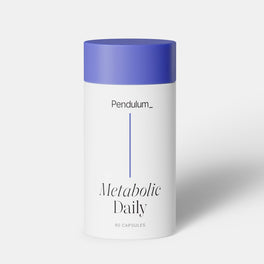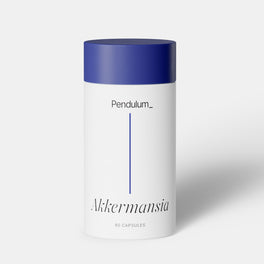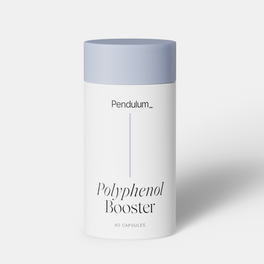Looks like your
cart is empty

Metabolic Daily
Improve metabolism

Akkermansia
Improves gut health

Polyphenol Booster
Increase antioxidants to protect cells
Stay in touch about special discounts, nutrition tips and additional education.
Looks like your
cart is empty

Improve metabolism

Improves gut health

Increase antioxidants to protect cells

Colleen Cutcliffe, James Bullard, and John Eid share their story of coming together to develop medical probiotics that target the human microbiome to improve the lives of patients suffering from a variety of diseases.
Colleen: We worked at Pacific Biosciences (which focuses on DNA sequencing) together nine years ago, and we just clicked. We had three pretty different roles. I was leading the biology group there. John was like the company guru. If you ever had an idea involving the technology or science, John was the person to go to. Jim was building data analysis software. There was a lot of mutual respect for each other's technical skills, but then also got along really well personality-wise. We like to joke and drink bourbon.
John: That was the key bonding factor: bourbon.
John: At the time, the microbiome space was starting to gain popularity and interest from the scientific community. There was a lot of microbiome profiling that showed that the microbiomes of people with specific diseases and illnesses were different from healthier people, but there wasn’t an understanding of what was driving the differences. We also noticed that people in the space were using much older technology. We had the technical expertise on how to use newer Pacific Biosciences long read sequencing technologies and so we saw an opportunity to use the sequencing technology that we had built and apply it to the microbiome space.
Colleen: The importance of the microbiome also struck home for me in a deeply personal way. My first daughter was born almost eight weeks prematurely, and she had gotten all these antibiotics as part of the standard protocol for preemies. As she started to grow up, she had gut issues and food sensitivities that no one else in the family had. When I saw the studies showing that early antibiotic treatment completely decimates the microbiome and can alter that person’s microbiome into adulthood, that’s when I knew that there was a chance I could build something that could help my own child. And the obvious next question that clicked in my mind was, how can we help as many people as we can through microbiome solutions?
James: We knew there was a lot that could be done in the microbiome space that just wasn’t happening. Plus, we enjoyed working together. And so the question became, why not?
Colleen: We also wanted to create a company for people who are excited and driven to develop cutting-edge microbiome solutions that improve the lives of others in a collaborative environment. We love to learn and take on new challenges, and we wanted to work with people who felt similarly.
John: We wanted to focus on a space where we could have the biggest positive impact for people in a way where the results of using our product were actually measurable — that you could truly see whether or not we were making people better.
The way type 2 diabetes is currently being treated, there’s this sort of unspoken understanding that people just get worse and worse. You just keep moving down that path. We wanted to provide an intervention solution that could actually help address the root issues, rather than a band-aid product that only treats one aspect of the disease.
Colleen: When we think about the world’s biggest health and nutrition problem, it’s sugar. And, if we want to have an impact on not only our lives but our children’s lives, figuring out how to manage sugar is about as worthy a mission as one can come up with. Given the scientific and medical indicators, microbiome solutions are full of potential. Every time I see the empty candy wrappers in the backpacks of my kids and their friends, it reminds me that we are up against some big adversaries. And personally, this is the kind of battle I’m excited to wake up to every morning and fight.